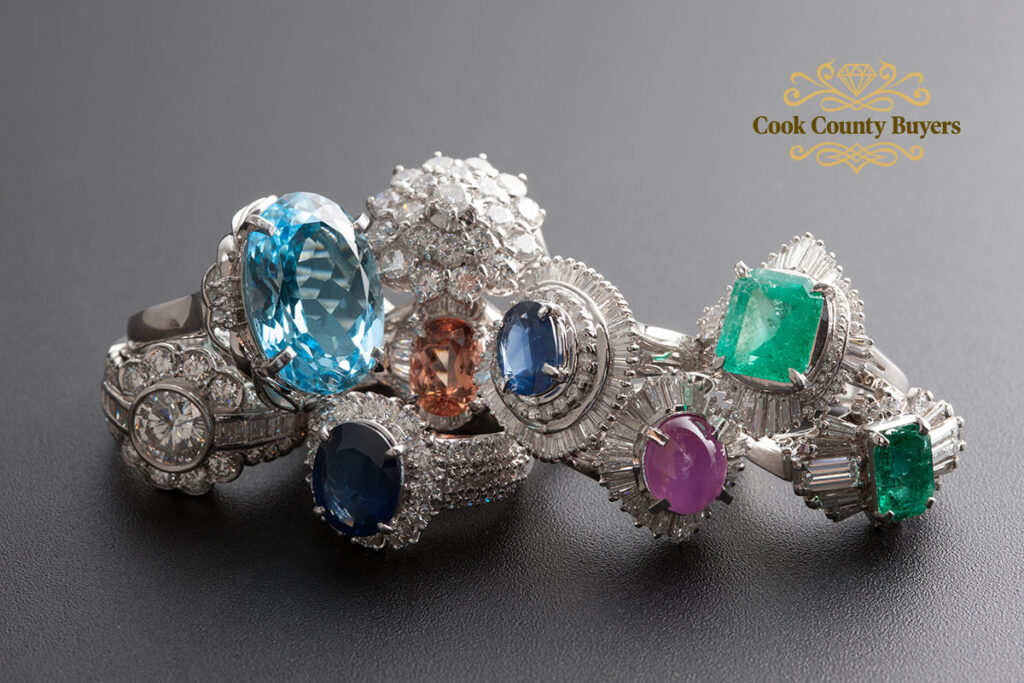Unlocking The Hidden Value of Estate Jewelry
Introduction to Rare Gemstones
Estate jewelry is not only a piece of personal history. Still, it can also hold hidden treasures in the form of rare gems. Identifying these precious gems is crucial for unlocking their hidden value when selling estate jewelry. In this article, we’ll explore tips and insights into recognizing and appraising rare gems in estate jewelry.
- Gemstone Identification:
The first step in unlocking hidden value is accurately identifying the gemstones in estate jewelry. These gems might often be overlooked due to their small size or unfamiliar appearance. Consulting with a gemologist or using advanced gemstone identification tools can help reveal the true nature of these stones. From sapphires and rubies to emeralds and beyond, understanding the unique characteristics of each gem is essential.
- Uncommon Gem Varieties:
While diamonds are often the focal point, estate jewelry may contain lesser-known but equally valuable gem varieties. Some examples include alexandrite, demantoid garnet, or padparadscha sapphire. Researching and being aware of these less common gemstones can be the key to recognizing hidden treasures others might overlook. This knowledge can set a seller apart and attract buyers interested in unique and rare pieces.
- Historical Significance:
Estate jewelry often carries historical significance, and certain gems may have been popular during specific eras. For example, the Art Deco period favored bold, geometric designs with vibrant colors. At the same time, the Victorian era was known for intricate designs with pearls and colored gemstones. Understanding the historical context of the jewelry piece can provide valuable clues about the gems it might contain. This knowledge adds to the piece’s story and can enhance its market value.

- Professional Appraisal:
Seeking a professional appraisal is crucial when dealing with estate jewelry, especially if rare gems are suspected. A certified gemologist or an appraiser with expertise in estate jewelry can comprehensively evaluate the piece, including identifying and grading gemstones. This appraisal serves as an official document that can be shared with potential buyers, instilling confidence in the quality and rarity of the gems.
- Market Trends and Demand:
Staying informed about market trends and the demand for specific gemstones is essential for successful estate jewelry sales. Some gems may experience fluctuations in popularity and value over time. For instance, a resurgence of interest in vintage styles might elevate the value of specific gems. Keeping an eye on market trends ensures that sellers can capitalize on the demand for particular gemstones, maximizing the return on their estate jewelry investment.

Conclusion:
Unlocking hidden value in estate jewelry requires gemstone knowledge, historical context, and market awareness. Sellers who invest time in identifying rare gems and understanding the unique characteristics of their pieces are better positioned to attract buyers and secure favorable deals. Whether a hidden sapphire in an antique ring or an overlooked demantoid garnet in a vintage brooch, these tips can help sellers unearth the hidden treasures in estate jewelry and unlock their market value.

